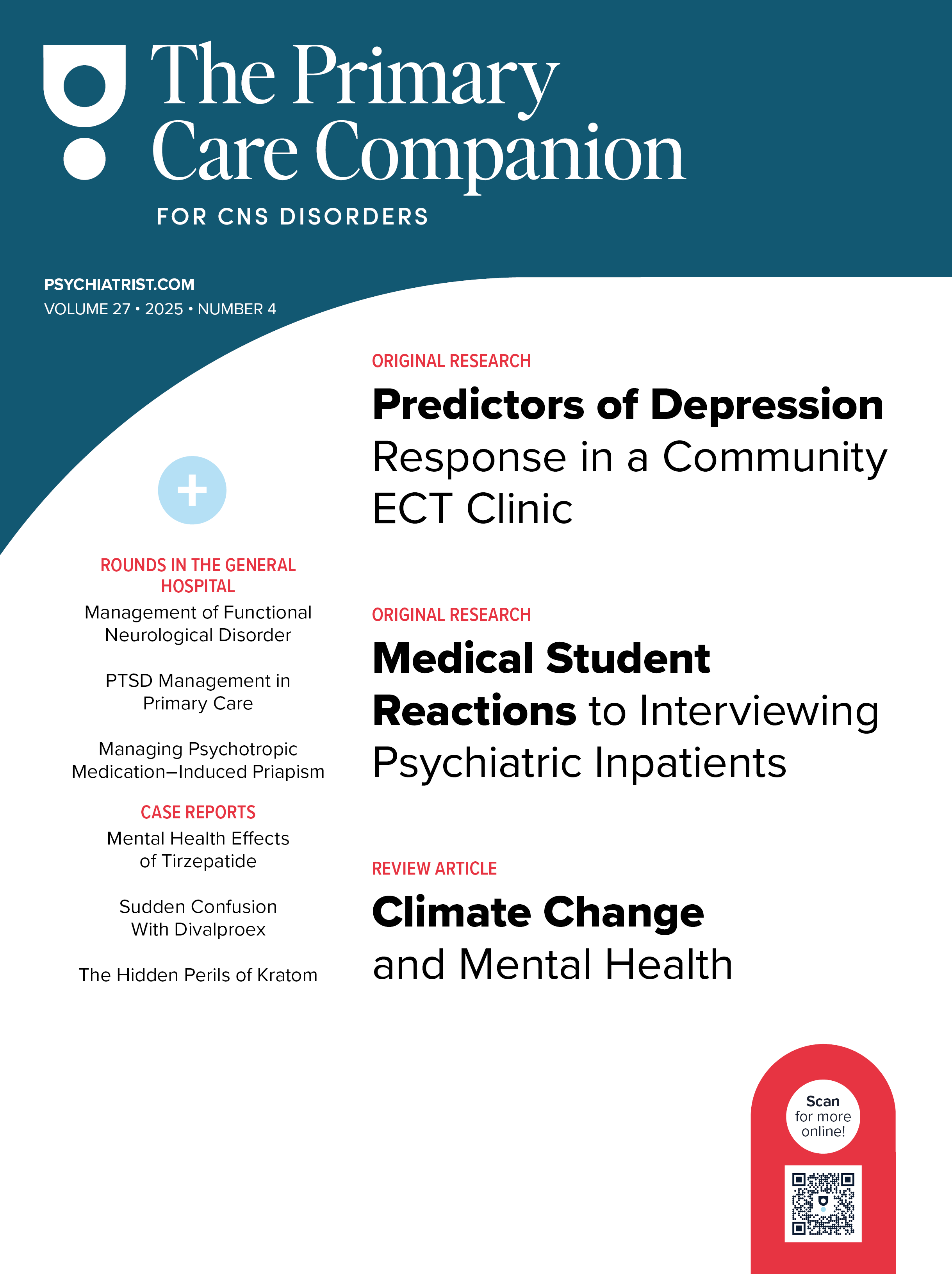To the Editor: Gender identity disorder (GID), also known as gender dysphoria or transgender identity, refers to the experience of major dysphoria or dissatisfaction with the sex that individuals were assigned at birth and the gender responsibilities related to their sex.1,2 Nationwide, stigma attached to transsexualism has made it a commonly shunned condition (with transsexualism also being a commonly shunned term) that can profoundly impact individuals’ lives, especially if left untreated. We present a unique case of repetitive sex reassignment surgeries from male to female and back again to male in a 28-year-old patient and discuss the outcomes.
Case report. A 28-year-old shy, depressed married man with a DSM-IV diagnosis of major depressive disorder was referred to a psychiatric lesbian, gay, bisexual, and transgender clinic and explained his sexual identity problem that had caused him depression, anxiety, and suicidal ideas and plans. Although he was married at age 20 years and had fathered 2 children, he was still struggling to be identified as a male. He described his desire to be a girl and how he used to dress up as a girl when he was 5 years old.
At the time of the visit, he had divorced his wife, had abandoned his children, and planned to marry his male lover and to live with him as his wife. He was conscious of the impact of his decision on others and was feeling guilty about abandoning his family to marry a male partner, but was unable to restrain himself from carrying out his plans.
The patient attended 20 hourly psychiatric sessions over 12 months before presenting to the clinic with no improvement. Further endocrinology evaluations and laboratory workups for hormonal imbalance revealed no abnormalities. He received 20 more hourly psychiatry sessions and cognitive therapy for 6 months with no improvement. He was then referred to urologists for additional evaluation for sex reassignment surgery, which was completed successfully.
However, the patient returned 10 years later with worsening anxiety and depression and suicidal ideas and plans. She stated how she had been married happily and enjoying life with her lover, yet she gradually started struggling with her gender as a female and the desire to switch back to a male. Her symptoms were so severe that she had twice attempted suicide to end her emotional pain.
She underwent concurrent psychiatric counseling and rehabilitation for 6 months with no improvement. The decision was made for her to be referred for sex reassignment surgery and hormone therapy, which were completed successfully and which were followed by significant improvement in the symptoms of depression, anxiety, and suicidal ideation at 6-month follow-up. There was no long-term follow-up on this patient and his fate.
There are no recently updated data on the prevalence of gender dysphoria. According to scant research, the prevalence of gender dysphoria is projected to be approximately 1 in 30,000, although this number is thought to significantly underestimate the true prevalence. To ensure quality of life, transgender individuals need professional medical and mental health care to transition from their birth sexual identity to their internal sense of gender.3-5
Even if the number of gender dysphoric individuals is on the rise, there is little research regarding this population and their health care needs. Given the stigma surrounding this population, they are less likely to receive appropriate help, which can result in further mental and health turmoil.
On the other hand, there are individuals who self-identify as transgender and seek extensive interventions to satisfy their internal sense of gender. This group ends up changing their physical appearance frequently from one gender to another. Given the scope of the public health burden of unnecessary repetitive procedures, it is important to conduct more comprehensive studies on this population to make sure they receive appropriate treatment and to prevent unnecessary costs.
In conclusion, investigating gender dysphoria and the individuals’ transition over time can benefit the treatment of psychiatric disorders among transgender individuals. It is a responsibility of psychiatrists to explore the patient’s hidden motives behind change of gender to help that patient attain a greater inner relational freedom.
Author affiliations: Lone Star Behavioral Hospital, Tomball, Texas (Dr Ehsanzadeh); Department of Psychiatry, Immanuel Medical Center, Omaha, Nebraska (Dr Raza); and Department of Psychology, University of Houston, Houston, Texas (Mr Haq).
Potential conflicts of interest: None reported.
Funding/support: None reported.
Published online: March 20, 2014.
Prim Care Companion CNS Disord 2014;16(2):doi:10.4088/PCC.13l01608
© Copyright 2014 Physicians Postgraduate Press, Inc.
References
1. Kurahashi H, Watanabe M, Sugimoto M, et al. Testosterone replacement elevates the serum uric acid levels in patients with female to male gender identity disorder [published online ahead of print September 18, 2013]. Endocr J. PubMed doi:10.1507/endocrj.EJ13-0203
2. Schenck-Gustafsson K, DeCola PR, Pfaff D, et al. Handbook of Clinical Gender Medicine. Basel, Switzerland: Karger Verlag; 2012:328-330.
3. Conway L. How frequently does transsexualism occur? http://ai.eecs.umich.edu/people/conway/TS/TSprevalence.html Updated December 17, 2012. Accessed January 10, 2014.
4. Grigorovich A. Long-term care for older lesbian and bisexual women: an analysis of current research and policy. Soc Work Public Health. 2013;28(6):596-606. PubMed doi:10.1080/19371918.2011.593468
5. Sadock BJ, Sadock VA, Ruiz P. Kaplan and Sadock’s Comprehensive Textbook of Psychiatry, Ninth Edition. Philadelphia, PA: Lippincott Williams & Wilkins; 2009:305-306.




